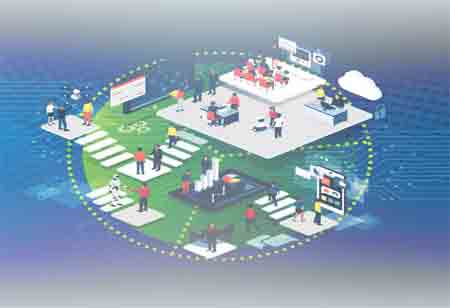THANK YOU FOR SUBSCRIBING
How to Tackle Modernization Challenges with No Code Low Code Platform
Advanced no-code and low-code application development solutions may even turn outdated ERP code into modular low-code or no-code objects that can get deployed as modern apps.

By
Apac CIOOutlook | Thursday, December 02, 2021
Stay ahead of the industry with exclusive feature stories on the top companies, expert insights and the latest news delivered straight to your inbox. Subscribe today.
Fremont, CA: In our post-pandemic economy, industries across the board are experiencing labor shortages. However, in the field of software development, this talent mismatch is nothing new. The lack of highly qualified developers that has grown in recent years has been increasingly evident as the workforce continues to decline in the aftermath of Covid-19.
Many businesses that use business automation and enterprise resource planning (ERP) solutions like SAP are under pressure to "modernize" to innovative and secure ERP platforms. Such large-scale reforms are typically labor- and integration-intensive, costly, and fraught with risk and disruption as systems move. Many businesses are also dealing with financial constraints as a result of the 2020 pandemic shutdowns. In this light, the costs, risks, and downtime involved with innovation appear intimidating.
Business processes handling duties like inventory management, buying, accounting, and customer relationship management must be automated and compatible with cloud-based infrastructures in this age of digital transformation. However, system modernization may expedite workflows and provide more accurate, real-time visibility with scalable, cloud-based designs. Any organization will benefit from a more smooth, contemporary technology environment as a result of this.
Meeting The Challenges Of Integration
An end-to-end, updated application built on a no-code or low-code platform is a driving force behind innovation. Rapid application development enables businesses to tailor their processes while retaining all of the business knowledge inherent in legacy systems, which has frequently gotten gathered for a company's existence. Enterprises are therefore enabled to produce practical, tailored innovation, assisting them in growing and succeeding in the new digital economy.
However, each ERP solution has its own set of integration issues. SAP ERP systems, for example, are often developed in SAP's ABAP, a classic, legacy programming language. Oracle ERP programs, on the other hand, make use of PL/SQL and packaged procedures. Advanced no-code and low-code application development solutions may even turn outdated ERP code into modular low-code or no-code objects deployed as modern apps. Young programmers prefer to learn new languages rather than old code, such as ABAP or PL/SQL.
A solid no-code or low-code strategy is a game-changer for the hundreds of thousands of businesses that use ERP systems, particularly SAP-based businesses that are under pressure to upgrade to SAP S/4HANA all at once. The capacity to swiftly, cost-effectively, and with minimal human participation develop sophisticated ERP connections can potentially shift the trajectory of innovation. Because of the sophisticated integration features inherent in a successful, end-to-end, rapid application development platform, no-code and low-code solutions get poised to propel business environments forward at a quicker rate than the present developer labor pool can do alone.





